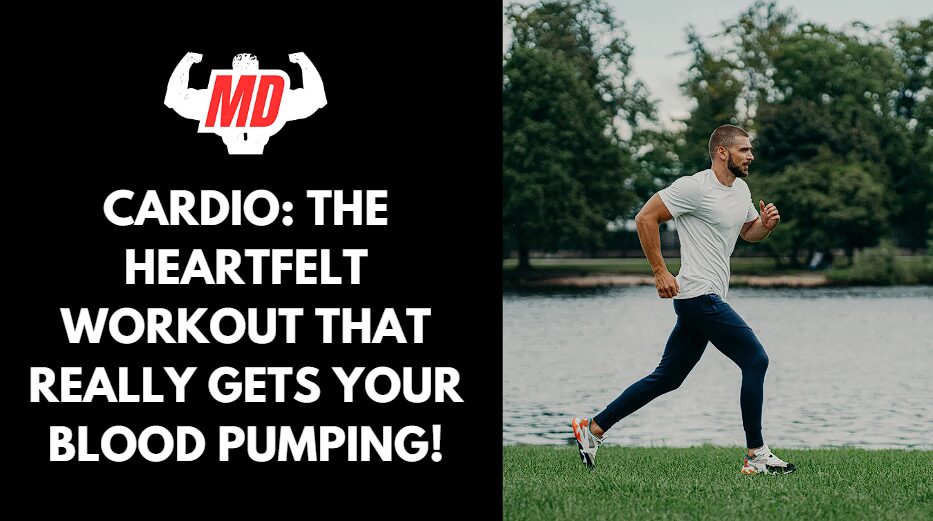Cardiovascular exercise, or “cardio,” is one of the most popular forms of physical activity, celebrated for its vast benefits on heart health and overall fitness. Cardio workouts focus on getting the heart rate up, improving blood circulation, and enhancing the efficiency of the heart and lungs. Regularly engaging in cardio exercises can strengthen their heart muscles, boost stamina, and significantly lower the risk of heart disease.
Cardio is essential for cardiovascular fitness because it increases oxygen supply throughout the body and improves the heart’s ability to pump blood. Whether walking, running, or cycling, each cardio activity promotes healthier blood flow and helps remove toxins. This type of workout is crucial for physical well-being and benefits mental health, boosting mood, energy, and cognitive function.
Understanding Cardio Workouts
Cardio exercise, also known as aerobic exercise, is any physical activity that raises the heart rate and keeps it elevated for an extended period. This exercise stimulates the heart and lungs to work harder to deliver oxygen-rich blood to muscles. For the best results, cardio exercises are typically performed within specific heart rate zones, which correspond to different intensity levels, allowing individuals to maximize their workout benefits.
Cardio workouts are highly effective for burning calories, making them ideal for weight loss and fat reduction. Additionally, regular cardio exercise enhances metabolic rate, promoting higher calorie burn even at rest. Cardio activities also increase endurance, allowing the body to improve its oxygen uptake, or VO2 Max, which is the maximum amount of oxygen it can utilize during intense exercise. Over time, these benefits lead to greater stamina and improved respiratory health.

Types of Cardio Workouts
Steady-State Cardio
Steady-state cardio involves maintaining a consistent, moderate pace for an extended period. Common examples include jogging, cycling, and brisk walking. The primary benefit of steady-state cardio is the ability to sustain a manageable pace, allowing the body to burn calories efficiently over a longer duration.
This type of cardio is particularly useful for those looking to build endurance without the added intensity or pressure on the body that high-impact exercises might bring.
High-Intensity Interval Training (HIIT)
HIIT is a popular form of cardio that alternates between short, intense bursts of activity and brief recovery periods. The short intervals push the body to reach high exertion levels, enhancing calorie burn and promoting fat loss more effectively than steady-state cardio.
Examples of HIIT workouts include sprint intervals, jump squats, and burpees. HIIT is known for building lactic acid in the muscles, which can enhance stamina and resilience with each session as the body learns to recover and adapt more quickly.
Low-Impact Cardio
Low-impact cardio is a gentle yet effective workout option, particularly beneficial for those with joint concerns or looking to incorporate active recovery days. Exercises such as swimming, using an elliptical, and rowing allow the body to move without significant strain on joints.
This type of workout provides cardiovascular benefits while promoting flexibility and balance, making it suitable for individuals recovering from injuries or starting a new fitness journey.
Designing an Effective Cardio Workout Routine
Setting specific goals is essential for tailoring cardio workouts to fit individual needs, whether that goal is weight loss, endurance improvement, or cardiovascular health. For instance, those focusing on weight loss may benefit from higher-intensity intervals, while endurance seekers may prioritize longer, steady-state cardio sessions.
Tracking progress, such as monitoring times or distances, allows for gradual adjustments to ensure continued improvement.
Adding variety to cardio routines through cross-training can keep workouts fresh and prevent muscle imbalances. Integrating resistance training, such as weights or bodyweight exercises, complements cardio for a well-rounded fitness plan.
Plyometric movements and core stability exercises can enhance coordination, agility, and overall functional strength, supporting cardio performance in diverse ways.
Warm-ups and cool-downs are vital for maximizing the benefits of any cardio workout. Warming up prepares the muscles and joints, reducing injury risk, while cooling down allows the heart rate to return to resting levels gradually and promotes quicker recovery.
Techniques such as deep breathing and proper hydration are also key, helping to sustain energy levels during workouts and support muscle recovery afterward.
Monitoring and Enhancing Cardio Workouts
Today, wearable devices like heart rate monitors, fitness trackers, and smartwatches are invaluable tools for cardio enthusiasts. These devices track key metrics such as heart rate zones, sweat rate, calories burned, and workout intensity, allowing individuals to adjust their workouts based on real-time feedback.
Tracking can be particularly useful for setting and reaching specific goals, such as staying within the optimal heart rate zone for fat-burning or endurance-building.

Gradually improving cardio workouts’ pace, intensity, and duration is crucial for avoiding plateaus and maintaining progress. Strategies like increasing interval lengths in HIIT, adjusting incline or resistance in steady-state workouts, and managing rest periods help the body continuously adapt. Balanced duration and effective recovery management ensure the body has ample time to heal and rebuild, allowing for greater performance gains.
FAQs
How often should I do cardio workouts for the best results?
It’s generally recommended to moderate cardio exercise about 150 minutes per week, or 30 minutes most days, for health benefits. For those looking to improve fitness or lose weight, adding some high-intensity sessions weekly can help accelerate results.
Is it okay to do cardio every day?
Yes, but it’s essential to vary the intensity and types of cardio to avoid overuse injuries. Mixing low-impact and high-impact workouts and incorporating rest days supports recovery and reduces injury risk.
What’s the best time of day to do cardio?
The best time varies per individual and lifestyle. Some find morning cardio energizing, while others prefer evening workouts for de-stressing. Consistency matters most, so choose a time that fits your schedule.



